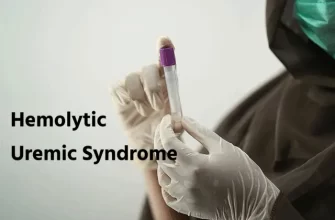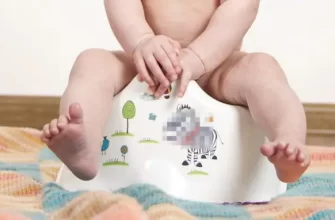Diaper rash is a common skin irritation that affects babies and toddlers who wear diapers. It appears as red, inflamed skin in the diaper area and can cause discomfort or pain. While not usually serious, it requires prompt care to prevent worsening.
Diaper Rash Prevalence by Age Group (%)
This chart illustrates the prevalence of diaper rash among different infant age groups. The highest prevalence occurs between 6-12 months, indicating a crucial period for skin care and preventive measures.
What Causes Diaper Rash?
Several factors can lead to diaper rash, including:
- Prolonged Exposure to Moisture: Wet diapers left on too long cause skin breakdown.
- Case Example: A 6-month-old baby in Florida developed a severe rash after sleeping through the night in a wet diaper. The rash improved significantly after the parents started changing the diaper more frequently and using a barrier cream.
- Friction and Chafing: Tight-fitting diapers rub against the skin, leading to irritation.
- Case Example: An 8-month-old in Texas had persistent redness around the diaper edges. Switching to a larger diaper size eliminated the problem.
- Irritants in Diapers or Wipes: Some babies react to fragrances, dyes, or chemicals in diapers and wipes.
- Case Example: A 5-month-old in California developed red, patchy skin after switching to a scented wipe. Returning to unscented, hypoallergenic wipes resolved the irritation.
- Yeast or Bacterial Infections: Warm, moist environments promote fungal and bacterial growth.
- Case Example: A 9-month-old in New York developed small, red bumps that didn’t improve with regular diaper cream. A doctor prescribed an antifungal cream, which cleared the rash within a week.
- Introduction of New Foods: Changes in diet can alter stool composition, making rashes more likely.
- Case Example: A 7-month-old in Illinois experienced frequent, acidic bowel movements after trying citrus fruits, leading to diaper rash. Reducing acidic foods and applying a barrier cream helped heal the rash.
- Antibiotic Use: Antibiotics can disrupt the balance of good bacteria, increasing the risk of yeast infections.
- Case Example: A 10-month-old in Colorado developed a persistent rash after a round of antibiotics for an ear infection. A pediatrician recommended probiotics and an antifungal cream, which resolved the rash.
Top Causes of Diaper Rash (%)
| Cause | Percentage (%) |
|---|---|
| Prolonged moisture | 45% |
| Friction/chafing | 25% |
| Irritants (wipes, diapers) | 15% |
| Yeast infections | 10% |
| Diet changes | 5% |
This chart highlights the leading causes of diaper rash, with prolonged moisture being the most significant factor. Proper hygiene and preventive care can help mitigate these common triggers.
How to Diagnose Diaper Rash
Parents and caregivers can usually identify diaper rash by its appearance:
- Red, inflamed skin in the diaper area, sometimes appearing shiny or with areas of slight swelling.
- Dry, peeling, or scaly patches: Mild cases may present with flaky or rough skin, which can worsen if not addressed.
- Raised bumps or blisters (in more severe cases): If small red bumps or pus-filled blisters appear, this may indicate an infection, requiring medical attention.
- Baby appears uncomfortable or fussy, especially during diaper changes: If the baby cries excessively when touched or cleaned, it may be due to heightened skin sensitivity or pain, signaling a need for closer monitoring.
If the rash does not improve with basic treatments, a pediatrician may perform a visual examination to check for infections.
Effective Treatments for Diaper Rash
Treatment depends on the severity of the rash. Some of the most effective approaches include:
- Frequent Diaper Changes (9/10): Keep the baby’s skin dry by changing diapers every 2–3 hours. Overnight diapers can help keep moisture away for longer periods.
- Barrier Creams and Ointments (10/10): Zinc oxide-based creams (like Desitin, Aquaphor, Boudreaux’s Butt Paste, or Triple Paste) create a protective layer to prevent irritation. Apply a thick layer after every diaper change.
- Air Exposure (8/10): Allow the baby to spend time without a diaper for 10–15 minutes multiple times a day to let the skin breathe and dry naturally.
- Gentle Cleansing (9/10): Use fragrance-free wipes or lukewarm water with a soft cloth to minimize irritation. Brands like WaterWipes and Pampers Sensitive are good options.
- Antifungal or Antibiotic Creams (Varies): If a yeast infection is present, pediatricians may recommend antifungal creams like Clotrimazole or Nystatin (effectiveness: 9/10). For bacterial infections, a doctor may prescribe an antibiotic ointment such as Mupirocin (effectiveness: 9/10). Always consult a healthcare provider before using medicated creams.
Average Time to Heal Diaper Rash by Treatment Type (Days)
| Treatment Type | Healing Time (Days) |
|---|---|
| Barrier creams | 3 days |
| Antifungal creams | 5 days |
| Antibiotic ointments | 7 days |
| Natural remedies | 6 days |
This chart compares the average healing time for diaper rash using different treatments. Barrier creams provide the fastest relief, while antibiotic ointments take the longest to heal.
Preventing Diaper Rash
Preventing diaper rash is easier than treating it. Follow these steps to keep your baby’s skin healthy:
- Change Diapers Promptly: Do not let wet or soiled diapers sit too long.
- Use Mild, Fragrance-Free Products: Avoid harsh wipes and soaps.
- Apply a Protective Barrier Cream Regularly: Even when there’s no rash, a thin layer of ointment can prevent irritation.
- Ensure Proper Fit: Avoid diapers that are too tight to reduce friction.
- Give the Baby Diaper-Free Time: Letting the skin air out for a few minutes daily can help prevent rashes.
When to See a Doctor
Consult a pediatrician if:
- The rash persists for more than 3–4 days despite home treatment, which may indicate an underlying infection or allergic reaction.
- Blisters, pus, or open sores appear: This suggests a possible bacterial or fungal infection. If you notice yellow crusting, fluid-filled sores, or spreading redness, consult a doctor immediately.
- The baby develops a fever along with the rash: A fever (100.4°F or higher) alongside diaper rash may indicate a systemic infection requiring medical evaluation.
- The rash spreads beyond the diaper area: If redness extends to the stomach, thighs, or back, this may signal a more serious infection or allergic reaction.
If the rash is mild and improving with home treatment, medical intervention may not be necessary. However, if symptoms worsen or cause significant discomfort, a pediatrician should be consulted for appropriate care.
Editorial Advice
According to Reyus Mammadli, healthcare advisor, “Diaper rash is a common but manageable condition. Parents should focus on prevention by keeping the baby’s skin dry, using protective creams, and avoiding irritants. If a rash worsens or doesn’t heal, seeking medical advice is crucial.”
Understanding diaper rash and taking preventive measures can save parents time and keep babies comfortable. A few simple changes in daily care can make a big difference.









